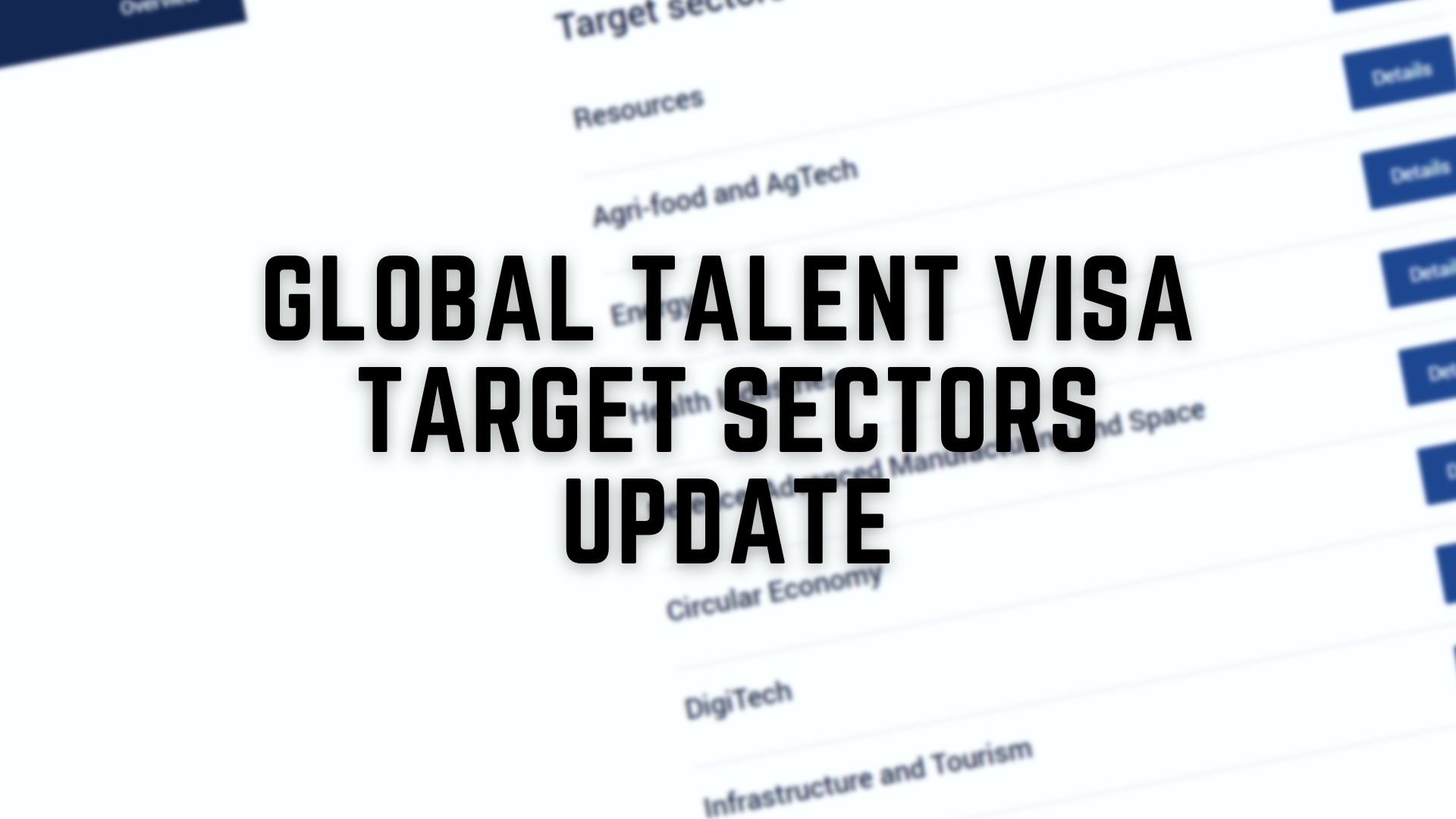Update: This program has been replaced by the National Innovation Visa (Subclass 858) and is no longer taking applications as of November 2024.
Australia’s Global Talent Visa is one of the most popular visa options for talented working professionals or academics looking at applying for permanent residency there.
The program was designed to bring the best talent into Australia, as a focus of the country’s recovery from Covid-19 and to increase their level of innovation, which Australia has been very popular for but has become less so over the last 10 years.
To do this, they’ve allocated 30,000 slots over the financial years of 2020-2022, which is a very large cap for a visa like this.
And because of that, the visa requirements change throughout the year, which you have to adapt to very quickly.
To give you perspective, a normal skilled visa may make 1 change to the regulations in 2 or 3 years.
For the global talent visa, we’ve had 2 changes to just the target sectors in the last 6 months!
Global Talent Visa Target Sectors (Updated)
The target sectors actually remain unchanged from the last few months, but the good news is they’ve given further clarity on what each of the sectors may include (i.e. sub-sectors).
I’ve listed each one below with the new sub-sectors indicated.
Resources
This sector includes, but is not limited to, the following specialisations:
- Engineering
- Geology
- Metallurgy
- Waste management
- Energy saving technology
- Extraction and processing
Agri-food and AgTech
This sector includes, but is not limited to, the following specialisations:
- Seed technology
- Nanomaterials
- Biofuels
- Supply chain and packaging
- Wearable technologies
Energy
This sector includes, but is not limited to, the following specialisations:
- Clean energy
- Resource robotics
- Computational metallurgy
- Geostatistics
- Benefication
- Battery/energy storage
Health Industries
This sector includes, but is not limited to, the following specialisations:
- Medical and biomedical technology
- Pharmaceutical and vaccine research and development
- IT biochemistry
- Digital health
- Implantables and wearable devices
- Genomics
Defence, Advanced Manufacturing and Space
This sector includes, but is not limited to, the following specialisations:
- Astrodynamics
- Satellite systems
- Rocket and avionics systems
- Urban mobility
- Military equipment acquisition and sustainment
- Automation and robotics
- Nano-manufacturing
- Sustainable manufacturing and life-cycle engineering
Circular Economy
This sector includes, but is not limited to, the following specialisations:
- Bioenergy
- Sustainable production
- Recycling
- Waste treatment
- Waste to energy technology
- Emissions technology
- Ecologically sustainable manufacturing
DigiTech
This sector includes, but is not limited to, the following specialisations:
- Quantum computing
- Cyber sciences
- Cyber security
- Artificial intelligence
- Blockchain, IoT
- Big data
- Disruptive technology
- Smart cities
- Machine learning
- Network engineering
- Cloud computing
Infrastructure and Tourism
This sector includes, but is not limited to, the following specialisations:
- Travel and tourism infrastructure
- Water infrastructure
- Energy infrastructure
- Regional development
Financial Services and FinTech
This sector includes, but is not limited to, the following specialisations:
- Neobanking
- Payment systems
- Wealth and regtech
- Blockchain
Education
This sector includes, but is not limited to, the following specialisations:
- Cutting edge skills in emerging fields of the industry
- Developing advanced educational systems and curricula
- Improving the education infrastructure in Australia
- Digital data and eResearch platforms
In a future article we’ll break down each of the sectors in further detail, but note that every section says ‘but is not limited to’ so other sub-sectors and specialisations can still apply.
Get in touch with us below if you’d like us to assess your qualifications for Australia’s Global Talent Visa.
Do I Qualify For A Global Talent Visa?
FILL IN YOUR DETAILS BELOW FOR A FREE ASSESSMENT



Leave A Comment